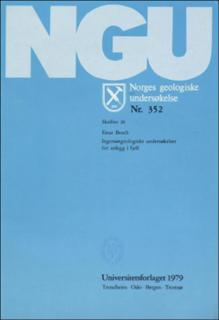| dc.contributor.author | Broch, Einar | |
| dc.date.accessioned | 2020-08-26T13:19:12Z | |
| dc.date.available | 2020-08-26T13:19:12Z | |
| dc.date.issued | 1979 | |
| dc.identifier.uri | https://hdl.handle.net/11250/2675085 | |
| dc.description.abstract | The purpose of this paper is to provide geologists with an outline of the procedures and methods used by engineering geologists in the planning and construction of underground openings in rock. Examples of different types of permanent underground openings currently in use in Norway are given. Geological factors which may influence the construction and the safety of such openings are discussed. Field equipment and typical laboratory tests are briefly described. The investigations may be divided into four stages: 1) the preliminary investigations, 2) the detailed field investigations, 3) the detailed underground investigations and 4) the final tunnel mapping. Characteristic features for each stage are discussed. The use of serial photographs and the engineering geological mapping are described. The final chapter gives brief information on the use and interpretation of results from trenches, shafts, exploration tunnels, borings, seismic measurements and also modelling and the measurement of stresses in rock. | |
| dc.language.iso | nor | |
| dc.relation.ispartofseries | NGU; Skrifter (352; 30) | |
| dc.rights | Navngivelse 4.0 Internasjonal | |
| dc.rights.uri | http://creativecommons.org/licenses/by/4.0/deed.no | |
| dc.subject | GEOLOGISK UNDERSØKELSE | |
| dc.subject | KARTLEGGING | |
| dc.subject | SEISMIKK | |
| dc.subject | BERGGRUNN | |
| dc.subject | KVALITETSUNDERSØKELSE | |
| dc.subject | BORING | |
| dc.title | Ingeniørgeologiske undersøkelser for anlegg i fjell. | |
| dc.type | Journal article | |
| dc.description.localcode | 36271 | |
| dc.source.pagenumber | 1-32 | |

